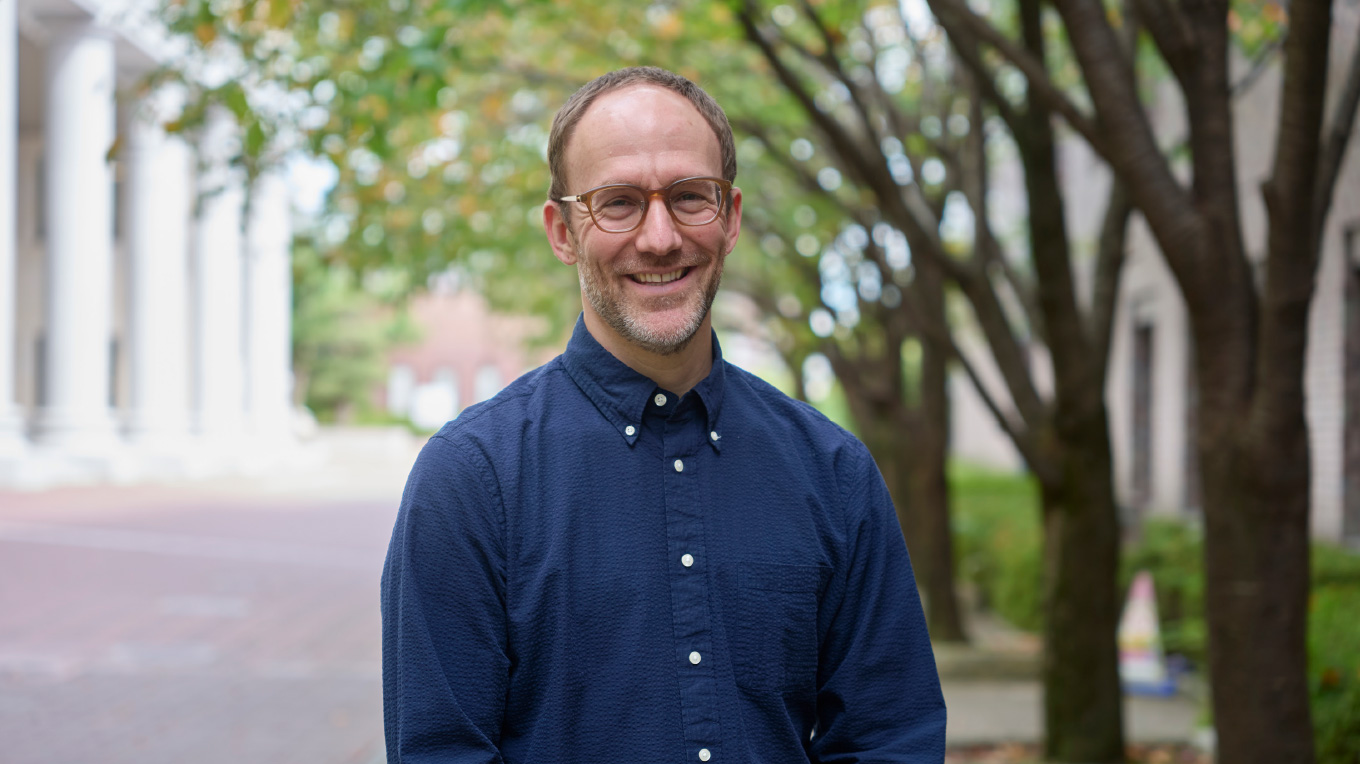Cultural Anthropology
Dive into a Different Culture
and Rethink Your “Norms”

SMITH Nathaniel M.Associate Professor,
College of International Relations
Fieldwork Reveals Changes in Shinjuku’s Kabukicho
Could you tell us about your research?
Could you tell us about your research?
SmithI study Japanese civil society and political activism from the perspective of cultural anthropology. Cultural anthropology explores issues in human society and culture by diving into a community to conduct long-term ethnographic fieldwork. That means spending a lot of time with people and building relationships. The anthropologist both observes and participates in daily life to learn from local perspectives. By examining information obtained through such fieldwork, considering anthropological literature and historical materials, and by looking at mass media and social networking sites, for example, anthropologists work to gain a deeper understanding of cultural meaning-making in the contemporary world. Anthropologists find significance and potential in reexamining what might be taken for granted and centering the diverse lived experience of people in our analysis.
Since 2019, I have been studying the transformation of Tokyo’s Kabukicho neighborhood as a community. When I first came to Japan as an exchange student 20 years ago, although we were told Tokyo was a safe place, Kabukicho seemed singled out for a negative reputation. Students like me were told to be careful around the “neighborhood that never sleeps,” which was home to a red-light district, illicit businesses, and gangster activity. That said, it is place that represents both hope and disappointment. Even before World War II, it was an area where immigrants from Taiwan and the Korean Peninsula lived. After the war, a multiethnic Kabukicho and surrounding neighborhoods were a center for the flourishing entertainment and nightlife industry. Over the last twenty years, the Tokyo Metropolitan Government pushed clean-up projects and as if in response, the number of foreign tourists increased significantly and Kabukicho was ironically reborn again as an entertainment district for visitors, boasting attractions like the Samurai Museum and Robot Restaurant. I became interested in the rapidly changing face of the neighborhood and started doing fieldwork.
The streets, the flow of people, the gestures of people walking—all of these are things I observe. I conduct interviews and surveys with people from various professions to examine the impact of municipal policies and how people perceive changes to the neighborhood. With tourists disappearing due to the COVID-19 pandemic, Kabukicho is facing new challenges. I am excited to follow developments in the area from various perspectives.
Meet People and Societies Who Do Not Share
Your Norms and Gain Flexible New Perspectives
How do you perceive the significance of researching cultural anthropology?
SmithWe often have preconceived notions that come from our own experiences without realizing them. I suppose many people have discovered something they considered to be normal was actually not universal just by visiting a different prefecture. This is even more the case when it comes to different countries, different languages, and different lifestyles. I believe these gaps reveal many fascinating things.
Here is a story from when I first came to Japan as an exchange student. I had been in bands as a high school student, so I looked for friends and joined a band in Tokyo. Through encountering gaps in expectations, I learned a lot about the culture of band activities in Japan. Take, for example, the position of the instruments. In Japan, the guitarist is usually on the right and the bassist is on the left when seen from the audience. Even the smallest live music club has amplifiers for both guitar and bass, their positions on stage were decided by amp placement. In the United States, band activities are not limited to live houses and some venues didn't even have amplifiers. Everyone would bring their own amplifiers and the positions would be decided freely. This was an example of how even such a small gap can reveal knowledge about different systems of live music.
When I was a high school student, I loved films by Japanese directors like Yasujiro Ozu and Masaki Kobayashi and listened to some Japanese bands. You could say Japan was a country that I felt some sort of connection with. I started casually studying Japanese as a university student, but after studying for just a month I was selected for a one-year exchange program in Tokyo. I suppose this is how I ended up where I am now.

Interviews Don’t Give You the Answers You Want, so Throw out Your Biased Preconceived Notions and Listen
Could you tell us about your seminars?
SmithThemes that students in my seminar are currently working on include “Buddhist vegetarian food from religious and business perspectives,” “religious practice in Kyoto and the Asian immigrant community,” “vegan activism,” and “diversity and educational environments.” I encourage seminar students to take a cultural anthropological approach through fieldwork.
I introduce literature and give step-by-step instruction on the specific methodologies of fieldwork, such as how to build trust and listen to people’s stories. One of the things I often tell my seminar students is that interviews don’t always give you the answer you think you’re looking for. Before you interview people, you must work to get sufficient background knowledge from academic literature. Yet, when you dive into the society you are studying, you may be told that your assumptions were wrong or find that people may not even want to talk to you in the first place. At times like that, it is important to focus on how to really listen. You can limit yourself by relying on limiting questions and make it harder to learn from the perspectives of others. Fieldwork, when seen as a challenge to move beyond preconceptions and assumptions, is a fascinating process.
For Those Interested in Cultural Anthropology: BOOKS
稲葉 佳子、青池 憲司
台湾人の歌舞伎町―新宿、もうひとつの戦後史
紀伊國屋書店(2017)
佐々木 美智子
新宿―ゴールデン街のひとびと
七月堂(2018)
中谷 吉隆
蠢く街 新宿 What 1955-2017
日本写真企画(2018)
For Those Interested in Cultural Anthropology: MOVIE
映画
さよなら歌舞伎町
2015年、日本
映画
ロスト・イン・トランスレーション
2003年、アメリカ/日本
映画
新宿インシデント
2009年、香港/日本